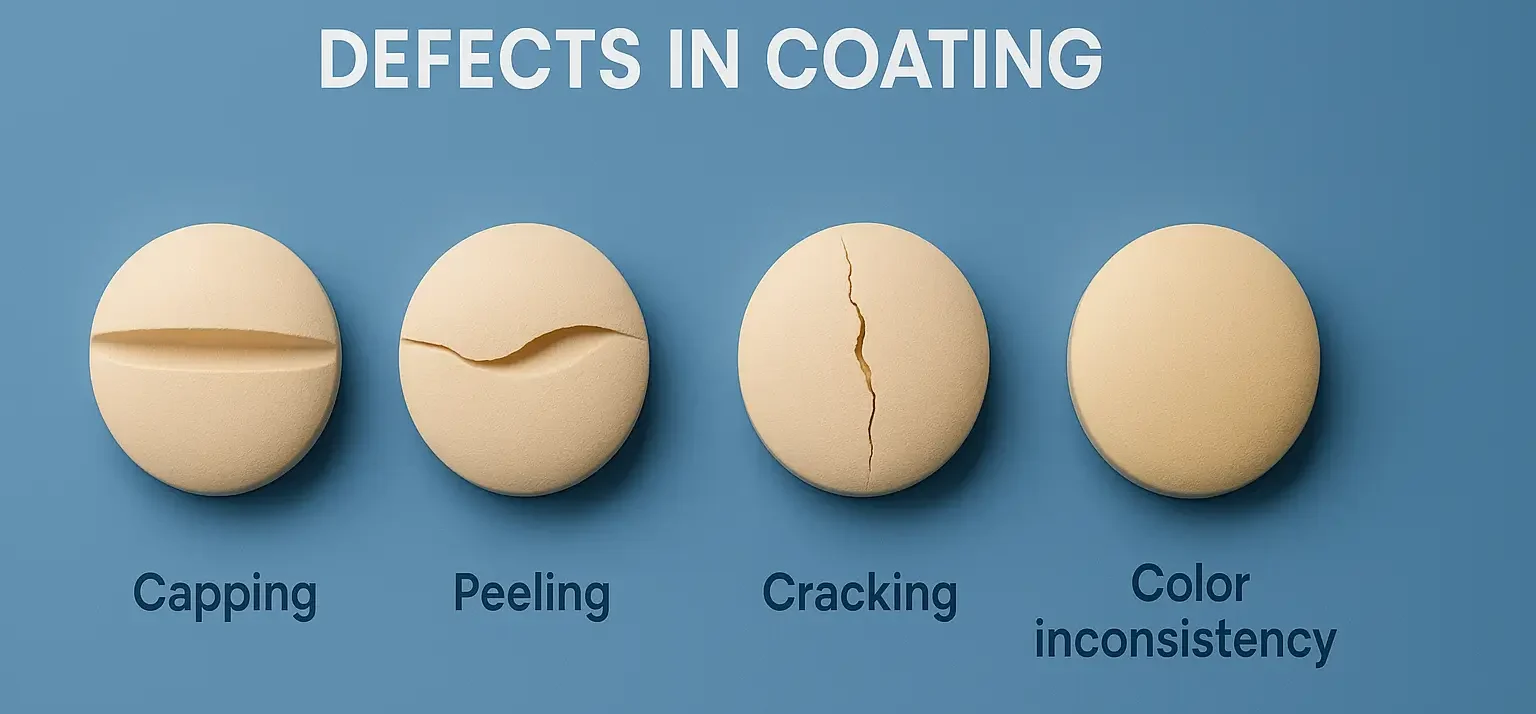- Defects in Coating refer to imperfections like peeling, cracking, or capping that affect tablet appearance or functionality.
- These result from formulation errors, equipment issues, or process deviations.
- It compromises product quality, stability, and patient acceptability.
- Several problems can occur during the process, affecting the tablet’s appearance, performance, and patient acceptability.
Common Coating Defects:
- Capping: Partial or complete separation of the coating from the tablet.
- Peeling: Large sections of coating detach, exposing the tablet.
- Cracking: Visible cracks in the coating film, potentially affecting integrity.
- Streaking: Uneven color distribution, resulting in visible streaks.
- Mottling: Irregular coloration or blotches due to inconsistent spray or drying.
- Pick-Up: Excess coating material adheres to non-tablet surfaces within the equipment.
- Weight Variation: Inconsistent coating thickness leads to weight discrepancies.
- Color Inconsistency: Variations in color intensity or hue across batches.
Causes of Coating Defects:
- Inadequate Mixing: Poor distribution of coating solution.
- Incorrect Solvent Evaporation: Excess moisture or incomplete drying.
- Temperature Fluctuations: Overheating or insufficient heating affecting polymer properties.
- High Humidity: Moisture affecting the drying process and coating adhesion.
- Improper Equipment Parameters: Incorrect spray rates, air flow, or rotation speed.
- Tablet Surface Issues: Rough or uneven tablet surfaces hinder uniform coating.
- Excessive Coating Thickness: Leads to cracking or capping.
Click Here to Watch the Best Pharma Videos

